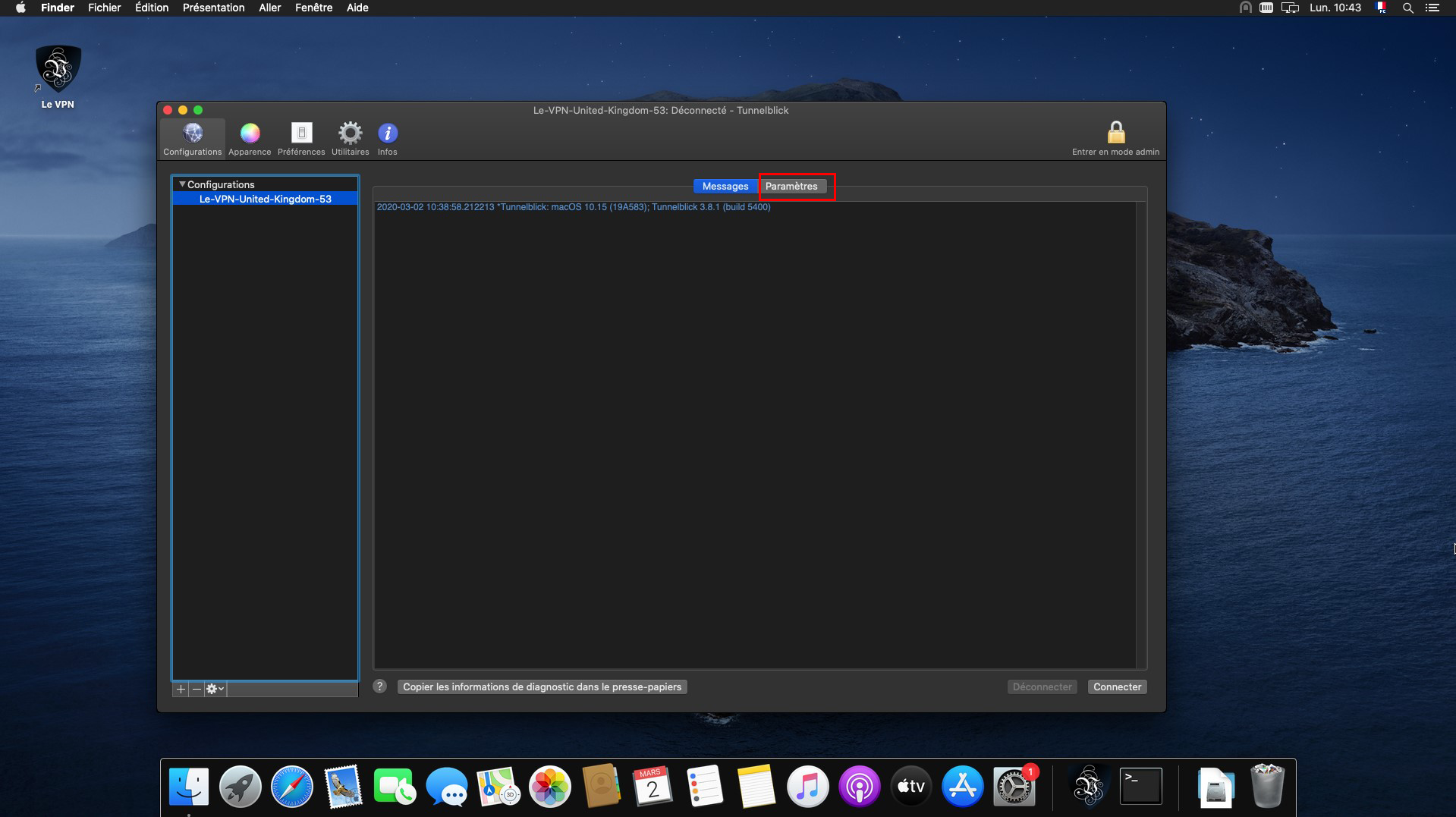
- #OPEN VPN TUNNELBLICK INSTALL#
- #OPEN VPN TUNNELBLICK UPDATE#
- #OPEN VPN TUNNELBLICK SOFTWARE#
- #OPEN VPN TUNNELBLICK LICENSE#
Otherwise the server would fail to recognize the curve type and possibly use an incompatible one, resulting in authentication errors. Starting from OpenVPN 2.4.8, it is required to specify the type of elliptic curves in server configuration. DH parameters file is not used when using elliptic curves. If TLS with elliptic curves is used, specify dh none and ecdh-curve secp521r1 (or ecdh-curve ed25519). Tls-crypt ta.key # Replaces tls-auth ta.key 0 Note: Note that if the server is behind a firewall or a NAT translating router, the OpenVPN port must be forwarded on to the server.Ĭopy the example server configuration file /usr/share/openvpn/examples/nf to /etc/openvpn/server/nf.Įdit the file making a minimum of the following changes: Distributes virtual addresses to connecting clients from the 10.8.0.0/24 subnet.įor more advanced configurations, please see the openvpn(8) man page and the OpenVPN documentation.Listens for client connections on UDP port 1194 (OpenVPN's official IANA port number ).Creates a VPN using a virtual TUN network interface (OSI Layer-3 IP routing).Uses Public Key Infrastructure (PKI) for authentication.The sample server and client configuration files make an ideal starting point for a basic OpenVPN setup with the following features: The OpenVPN package comes with a collection of example configuration files for different purposes. With the release of v2.4, server configurations are stored in /etc/openvpn/server and client configurations are stored in /etc/openvpn/client and each mode has its own respective systemd unit, namely, and configuration

#OPEN VPN TUNNELBLICK SOFTWARE#
OpenVPN is an extremely versatile piece of software and many configurations are possible, in fact machines can be both servers and clients. Note: Unless otherwise explicitly stated, the rest of this article assumes a basic Layer-3 IP routing configuration. OpenVPN client in Linux Containers also has general applicable instructions, while it goes a step further by isolating an OpenVPN client process into a container. One should use the provider certificates and instructions, see Category:VPN providers for examples that can be adapted to other providers. Begin with #The client configuration profile and skip ahead to #Starting OpenVPN after that. To connect to a VPN service provided by a third party, most of the following can most likely be ignored, especially regarding server setup. Read Kernel modules for more information.Ĭonnect to a VPN provided by a third party Users of custom kernel should make sure to enable the tun module: OpenVPN requires TUN/TAP support, which is already configured in the default kernel. Supports both OpenVPN 2 and OpenVPN 3 with Data Channel Offload
#OPEN VPN TUNNELBLICK UPDATE#
#OPEN VPN TUNNELBLICK INSTALL#
Install the openvpn package, which provides both server and client mode.
#OPEN VPN TUNNELBLICK LICENSE#
OpenVPN was written by James Yonan and is published under the GNU General Public License (GPL). Overall, it aims to offer many of the key features of IPSec but with a relatively lightweight footprint. OpenVPN is designed to work with the TUN/TAP virtual networking interface that exists on most platforms. Additionally it supports unencrypted TCP/UDP tunnels. It supports conventional encryption using a pre-shared secret key (Static Key mode) or public key security ( SSL/TLS mode) using client & server certificates. OpenVPN is tightly bound to the OpenSSL library, and derives much of its crypto capabilities from it. Additionally it has support for dynamic IP addresses and DHCP, scalability to hundreds or thousands of users, and portability to most major OS platforms. It supports SSL/TLS security, Ethernet bridging, TCP or UDP tunnel transport through proxies or NAT.

OpenVPN is a robust and highly flexible VPN daemon. For more detailed information, please see openvpn(8) and the OpenVPN documentation. This article describes a basic installation and configuration of OpenVPN, suitable for private and small business use.


 0 kommentar(er)
0 kommentar(er)
